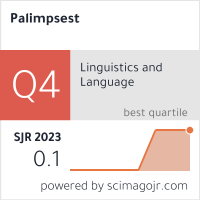THE DISCOURSE OF MISSION STATEMENTS OF SOME SLOVENIAN AND AUSTRIAN HIGHER EDUCATION INSTITUTIONS
DOI:
https://doi.org/10.46763/PALIM23815051rAbstract
This article is about the language of mission statements of a sample of Slovenian and Austrian higher education institutions in the field of business and economics. We analysed the content of these statements by using WordSmith tools, a suite of programmes for identifying key words in each text, generating word lists in frequency order, and/or studying certain words in context. First, we searched the Internet and saved mission statements of all Slovenian and Austrian business and economics higher education institutions (HEIs) that had such a document in English. For our research, we first created two corpuses (one for the Austrian HEIs and one for the Slovenian HEIs) in plain text format. After that we used WordList to create two-word lists and used Concord to see how the most frequently used words in those two lists are used in the context. We analysed and interpreted the results by highlighting the main characteristics of the discourse used in the sample texts, as well as pinpointing the main differences and similarities.
Keywords: concordance; HEIs; keywords; mission statement; WordSmith tools; word frequencies.


